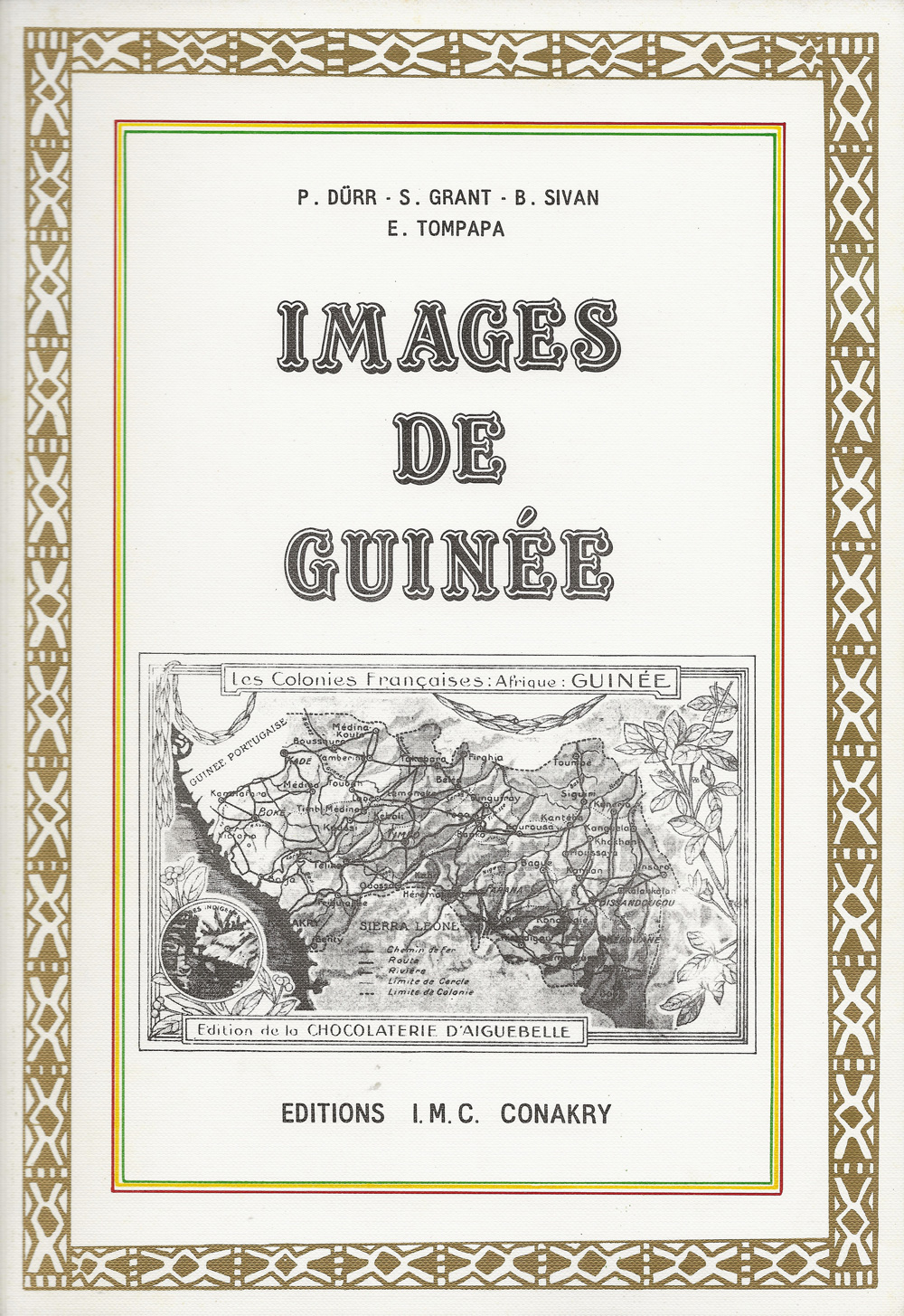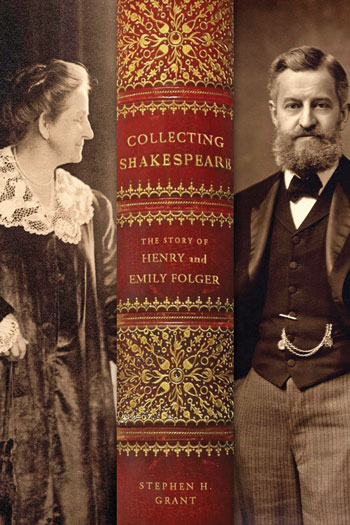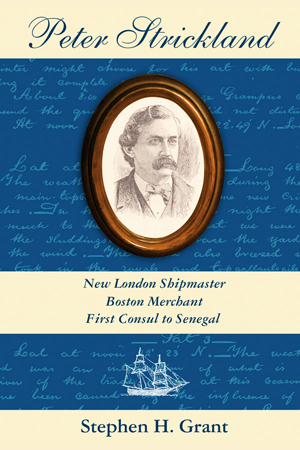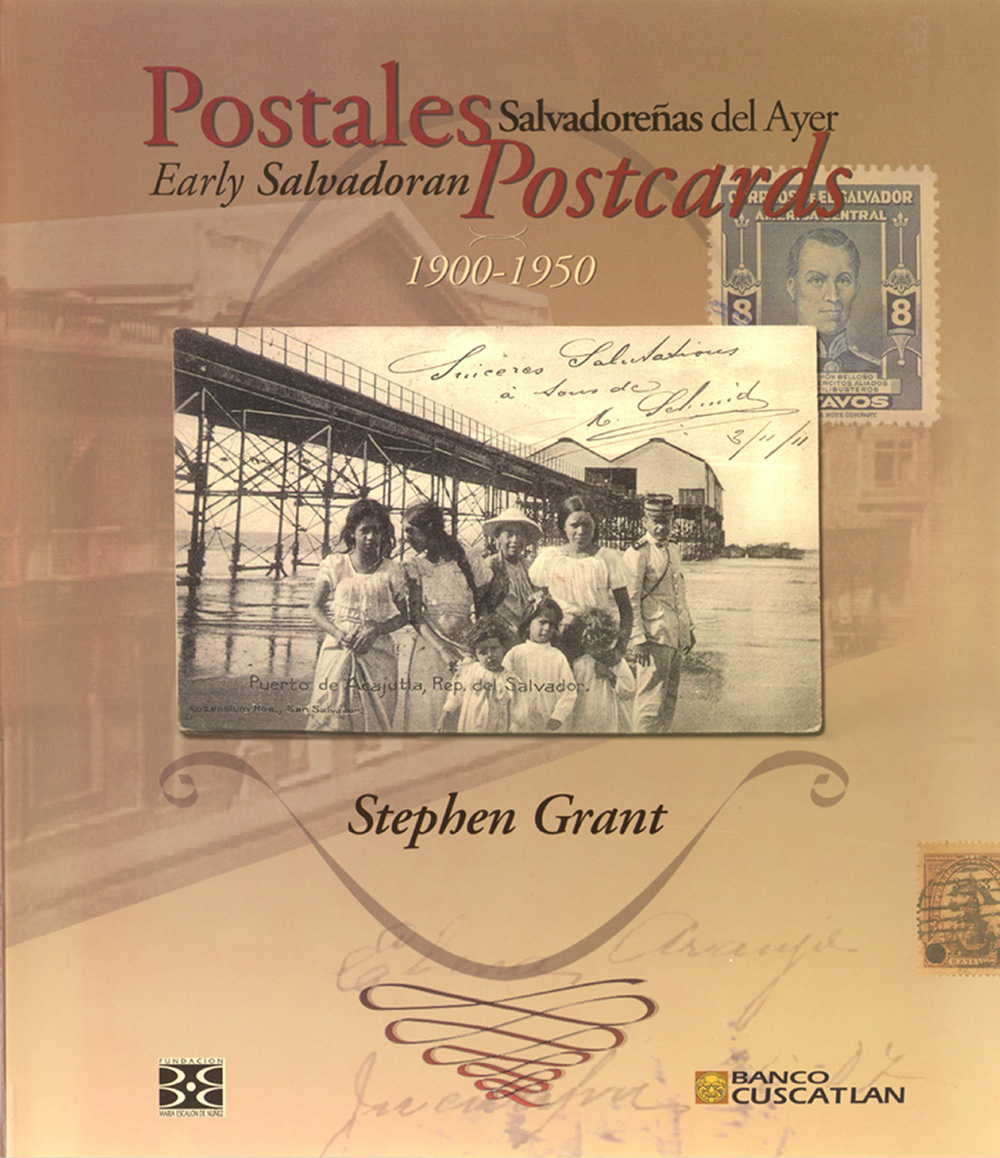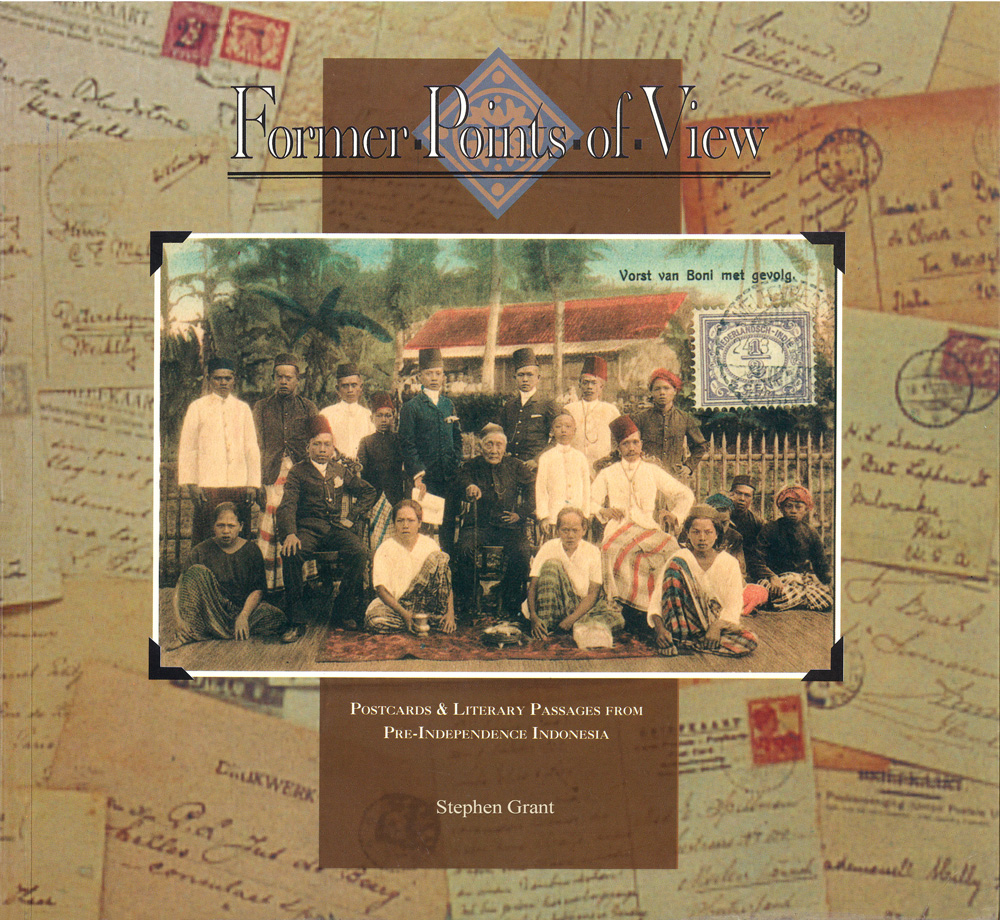Images de Guinée would not have seen the light of day without the participation of actors from five entities: financier from Germany; publisher representing the Vatican; reporter and printing staff from Guinea; and postcard collectors from United States (Grant) and France (Sivan, Dürr).
The first edition of Images de Guinée was released in 1991, published by the I.M.C. (Imprimerie de la Mission Catholique or) Catholic Mission Press in Conakry, Guinea. A second edition was published in 1994. A copy of the first edition was given to Pope John Paul II when he visited Guinea on Feb. 24–25, 1992. It is safe to say that Images de Guinée is now part of the Vatican Library in Rome.
No one better than the financier, Dr. Hubert Beemelmans, German Ambassador to Guinea, has articulated in the book’s preface how the book came to be. Beemelmans is a deep thinker––sensitive to the unsuspected trove of information that lies within picture postcards––who expresses himself beautifully in French. Translation:
The past is the foundation of the present and future. Humankind and nations that ignore their past do not know each other and do not know where they are going. One can criticize the past, but at the end of the day one must accept it or at least come to terms with it. It’s better to hold it dear. This book is the memory and the messenger from the past. Starting many years ago, the federal German government created a budgetary item to help friendly countries discover and preserve their cultural patrimony. This program rendered this book possible. The idea behind this book came to me when I admired USAID officer Mr. Stephen Grant’s exhibit of postcards of Guinea from 1890 to 1925 at the French-Guinean Alliance in April 1991, and recognized the vast interest aroused by the exhibition. To this collection were added postcards collected by Mr. Bernard Sivan and Mr. Pierre Dürr, advisors at the Central Bank. The three collectors made the choice of postcards for the book and their presentation. Mr. Emile Tompapa, journalist and reporter on Guinea, member of the Transitory Council for National Recovery, lent his spirited enthusiasm to the project by adding descriptive notes. This book is intended to appeal to those Guineans and foreigners who love Guinea and want to know its past in order to better understand its present and to be able to accompany its future.
Dr. Hubert Beemelmans, German Ambassador to Guinea.
The German subsidy allowed the Catholic Printing Press to train 30 members of the printing staff in the use of a book binder, purchased also with the grant. Up until the postcard project most of the Printing Press’s publication were Papal homilies. On June 30, 1992, Stephen Grant presented a copy of the book to Seydouba Cissé, Deputy Director of the Guinean National Archives for its collection as well as 30 old picture postcards of Guinea for display. Cissé wrote, « Mr. Stephen Grant left me an unforgettable souvenir which now I am responsible for preserving for eternity. These are postcards offered gratis to the National Archives of Guinea in 1992. Mr. Grant has participated in increasing the collection of the National Archives by a gratuitous and inestimable gift. I regret his departure but the National Archives will always remember him. » Then Mr. Cissé declared that the book represented the first book produced in Guinea by the private sector. All previous books in independent Guinea had been published by the Patrice Lumumba National Printing Office.
Durr, P., Grant, S., Sivan, S., Tompapa, E., Images de Guinée. Conakry, Guinea: Imprimerie Mission Catholique, 1st ed. 1991, 2nd ed. 1994, 147 pp. Preface, 258 images, 2 maps, 163 notes.
CONNECT

